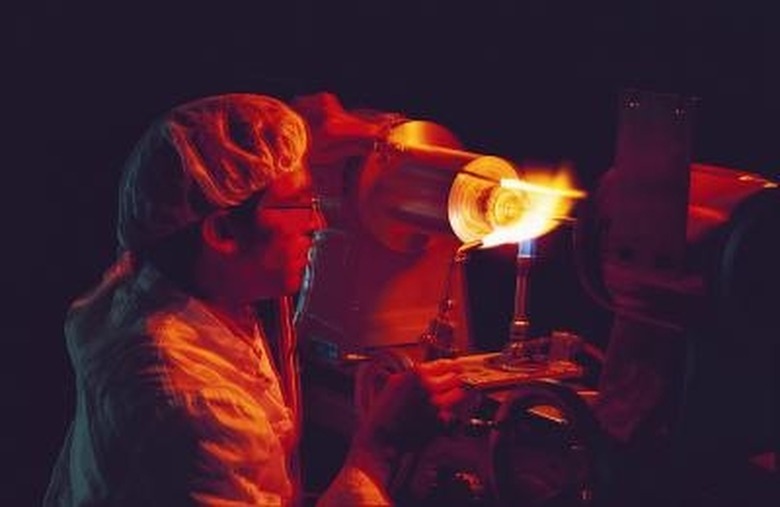How To Measure Hydrogen Gas
Hydrogen gas is the lightest and most common chemical element in the universe. Although hydrogen is prevalent, it is not available in its elementary form on earth except in its plasma state. Hydrogen is a tasteless and colorless gas, which makes it very difficult to measure by volume. Nonetheless, scientists have discovered that hydrogen gas can be generated by reacting metals with acids, with its volume measured during the experiment. Both the generation and measurement of hydrogen gas volume require precision and accuracy.
Step 1
Assemble the equipment and chemicals to be used to generate the hydrogen gas. Obtain a thin strip of magnesium ribbon with a mass of 25 g and hydrochloric acid or any other acid of choice. Measure precise amounts of acid and use acid concentration of 2 M for the procedure to be successful. Measure the length of your magnesium ribbon in centimeters since the measurements are essential to the calculation. Note down all the readings and measurements in a table. Take the measurements and quantities of the chemicals reading to the last decimal to avoid mathematical errors that may affect accuracy of the result.
Step 2
Immerse the magnesium ribbon into the acid while the test tube is properly covered using a cork stopper. Make sure the gas does not escape since that would alter the final outcome of the experiment with respect to the original quantities measured. Place the test tube with the reactants into a graduated cylinder with water. Allow the gas to cool at room temperature. Confirm the completion of the reaction by ensuring that the effervescence has stopped. This also indicates that the whole magnesium ribbon has disappeared in the reaction. Lower or raise the gas burette in the beaker of water until the level of water in the burette and beaker are at the same level. Take the reading by checking the measurement on the burette directly. Record the reading and room temperature.
Step 3
Calculate the pressure of the hydrogen gas. Find the actual pressure of hydrogen; calculate the actual contribution of hydrogen by multiplying the pressure of hydrogen over the room pressure by the sum of the volume and water. Use the mole ratios of the reactants to determine and calculate the expected volume of hydrogen gas. Give the volume of hydrogen gas yielded during the experiment in percentage form by multiplying by 100 percent the exact volume of hydrogen gas divided by the expected yield.
References
Cite This Article
MLA
S, JOHN. "How To Measure Hydrogen Gas" sciencing.com, https://www.sciencing.com/measure-hydrogen-gas-7768130/. 24 April 2017.
APA
S, JOHN. (2017, April 24). How To Measure Hydrogen Gas. sciencing.com. Retrieved from https://www.sciencing.com/measure-hydrogen-gas-7768130/
Chicago
S, JOHN. How To Measure Hydrogen Gas last modified March 24, 2022. https://www.sciencing.com/measure-hydrogen-gas-7768130/
